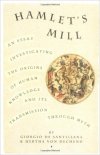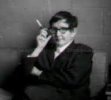Merlin
Jedi Master
Pg 187 - The Horns of Moses:-
Couldn't help comparing Horns of Moses with Hamlets Mill (1969) by MIT Professor Giorgio de Santillana and German Archaeologist Hertha von Dechend . . . Their views were ridiculed, mocked and vilified when they were published as they'd rocked the foundations of Archaeology.
Today it is acknowledged that they initiated a new discipline of study - Archaeo-Astronomy . . .
An interesting quote by Humboldt published in the Preface can be applied to us as well:-
http://www.bibliotecapleyades.net/hamlets_mill/hamletmill_preface.htm
Is it possible that the correspondences between the works of Homer and the Epic of Gilgamesh are simply two examples of the extraordinary fidelity of this method of passing on the knowledge of historical events ?
Couldn't help comparing Horns of Moses with Hamlets Mill (1969) by MIT Professor Giorgio de Santillana and German Archaeologist Hertha von Dechend . . . Their views were ridiculed, mocked and vilified when they were published as they'd rocked the foundations of Archaeology.
Today it is acknowledged that they initiated a new discipline of study - Archaeo-Astronomy . . .
An interesting quote by Humboldt published in the Preface can be applied to us as well:-
http://www.bibliotecapleyades.net/hamlets_mill/hamletmill_preface.htm
We had the idea. It was simple and clear. But we realized that we would run into formidable difficulties, both from the point of view of modern, current scholarship and from the no less unfamiliar approach needed for method. I called it playfully, for short, "the cat on the keyboard," for reasons that will appear presently. For how can one catch time on the wing? And yet the flow of time, the time of music, was of the essence, inescapable, baffling to the systematic mind. I searched at length for an inductive way of presentation. It was like piling Pelion upon Ossa.
And yet this was the least of our difficulties. For we also had to face a wall, a veritable Berlin Wall, made of indifference, ignorance, and hostility. Humboldt, that wise master, said it long ago: First, people will deny a thing; then they will belittle it; then they will decide that it had been known long ago.
Could we embark upon an enormous task of detailed scholarship on the basis of this more than dubious prospect? But our own task was set: to rescue those intellects of the past, distant and recent, from oblivion. "Thus saith the Lord God: 'Come from the four winds, O breath, and breathe upon these slain, that they may live.' " Such poor scattered bones, ossa vehementer sicca, we had to revive.
This book reflects the gradually deepening conviction that, first of all, respect is due these fathers of ours. The early chapters will make, I think, for easy reading. Gradually, as we move above timberline, the reader will find himself beset by difficulties which are not of our making. They are the inherent difficulties of a science which was fundamentally reserved, beyond our conception. Most frustrating, we could not use our good old simple catenary logic, in which principles come first and deduction follows. This was not the way of the archaic thinkers.
They thought rather in terms of what we might call a fugue, in which all notes cannot be constrained into a single melodic scale, in which one is plunged directly into the midst of things and must follow the temporal order created by their thoughts. It is, after all, in the nature of music that the notes cannot all be played at once. The order and sequence, the very meaning, of the composition will reveal themselves--with patience--in due time. The reader, I suggest, will have to place himself in the ancient "Order of Time."
Troilus expressed the same idea in a different image: "He that will have a cake out of the wheat must needs tarry the grinding."
GIORGIO DE SANTILLANA





